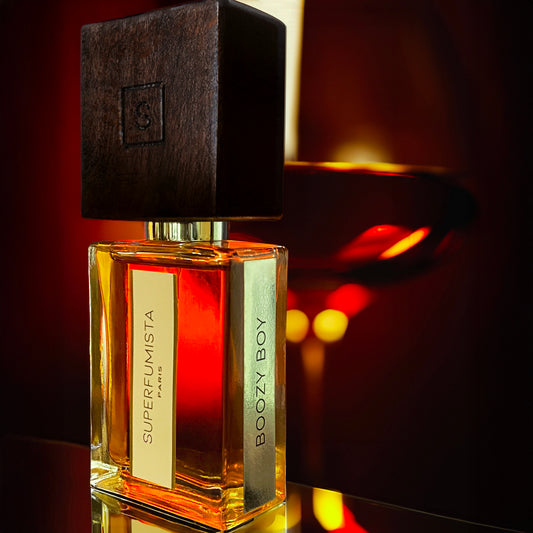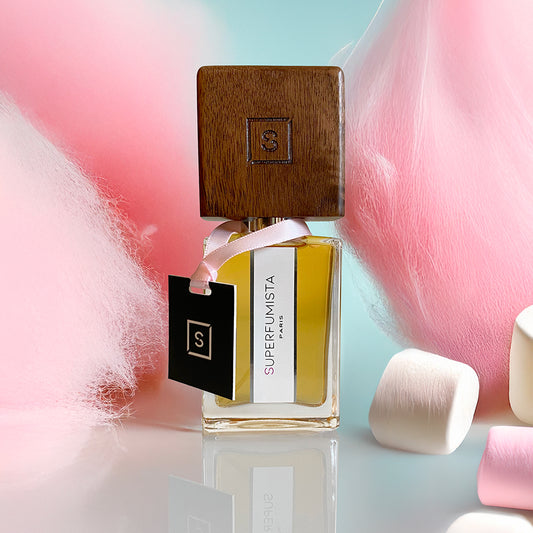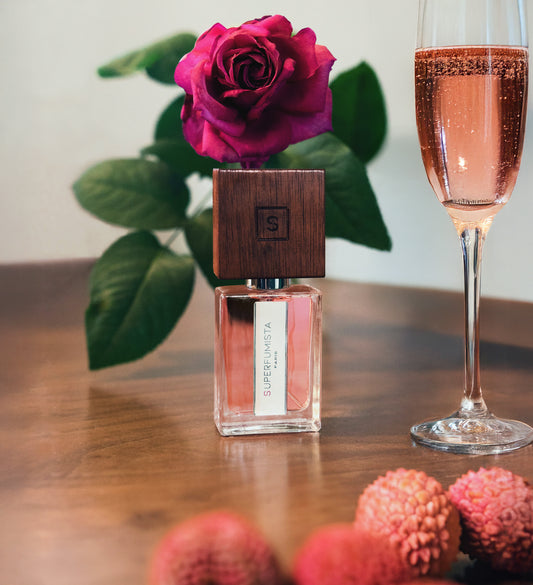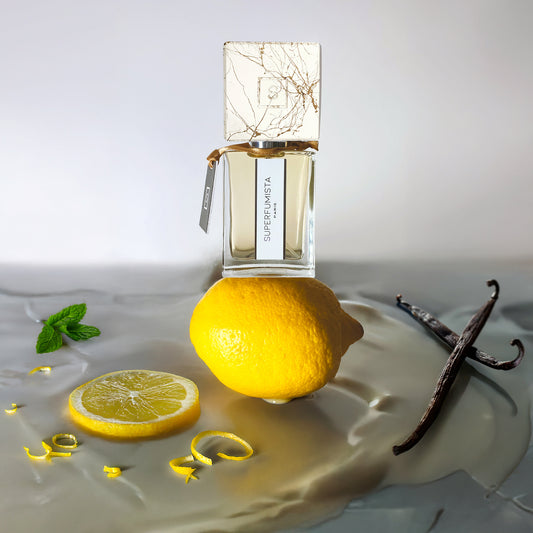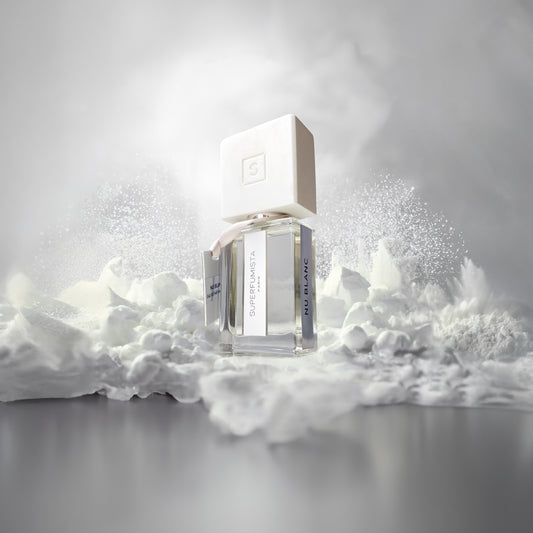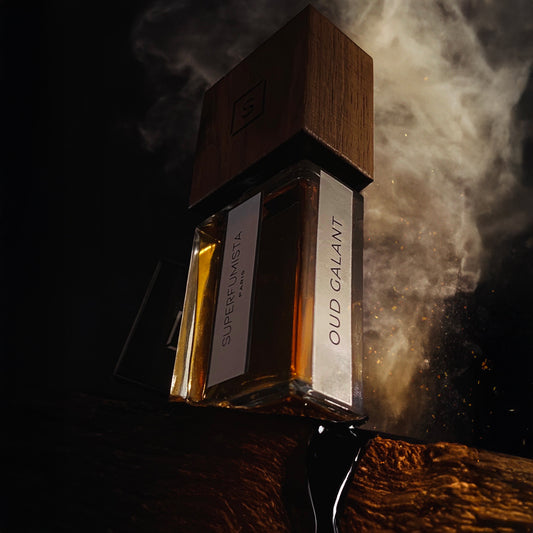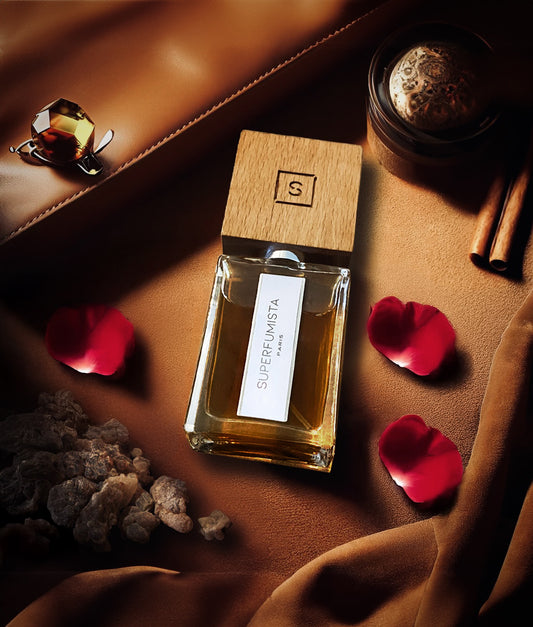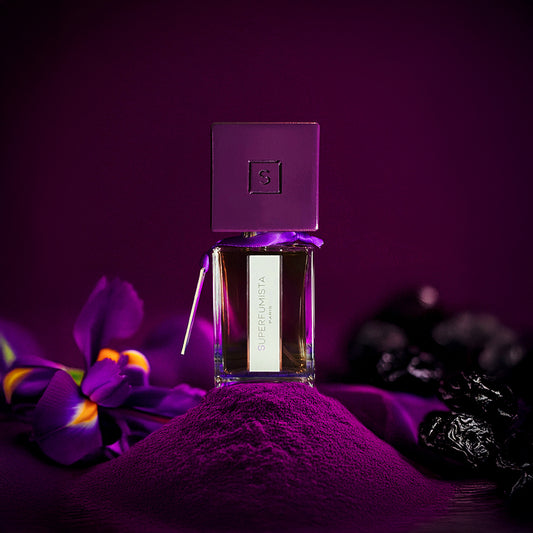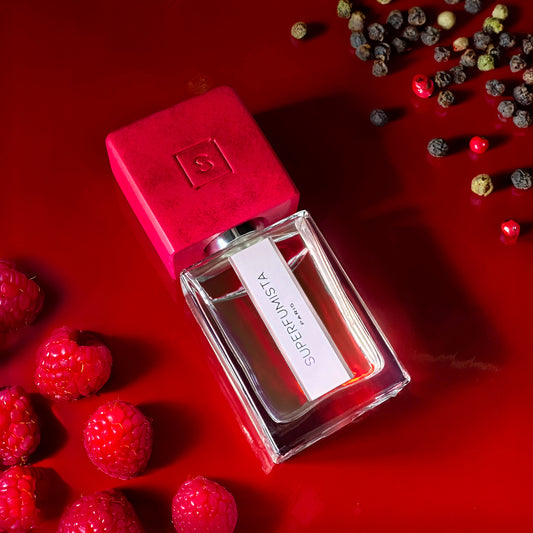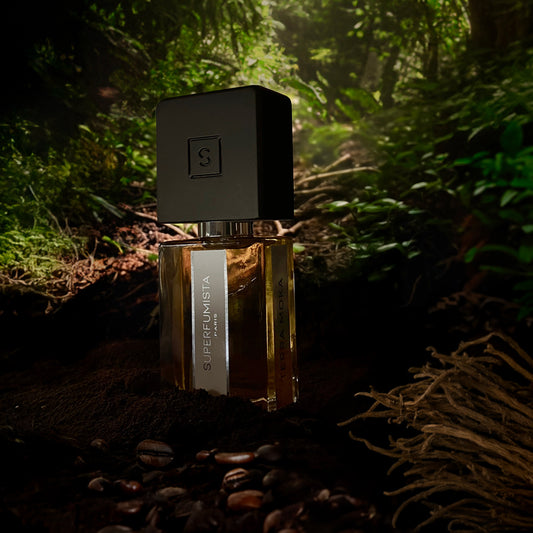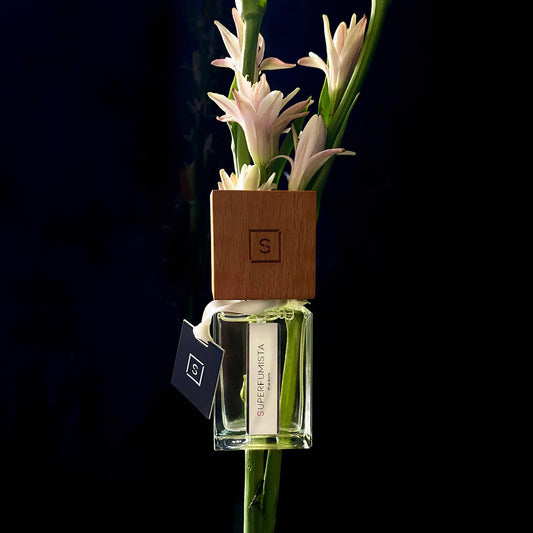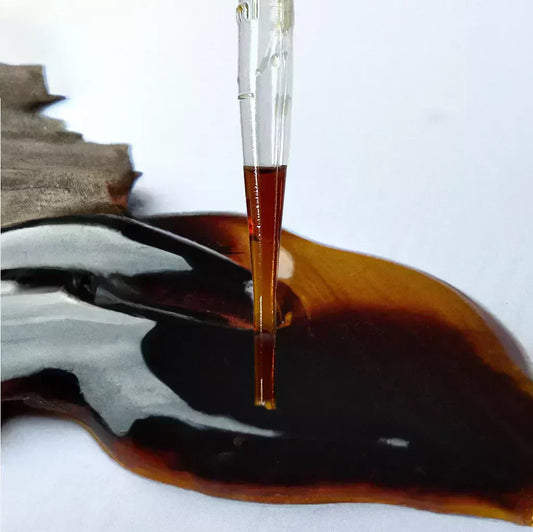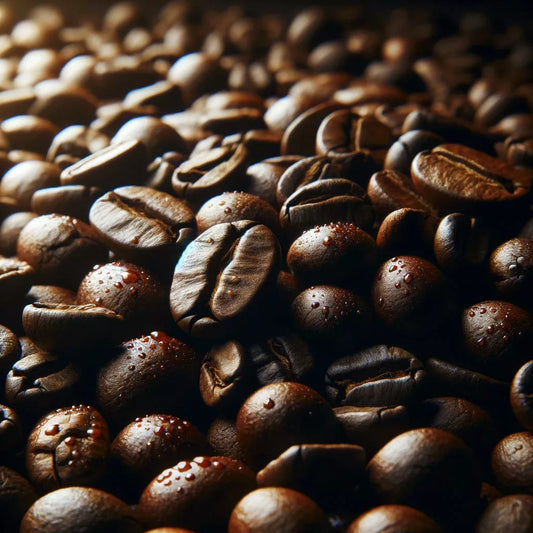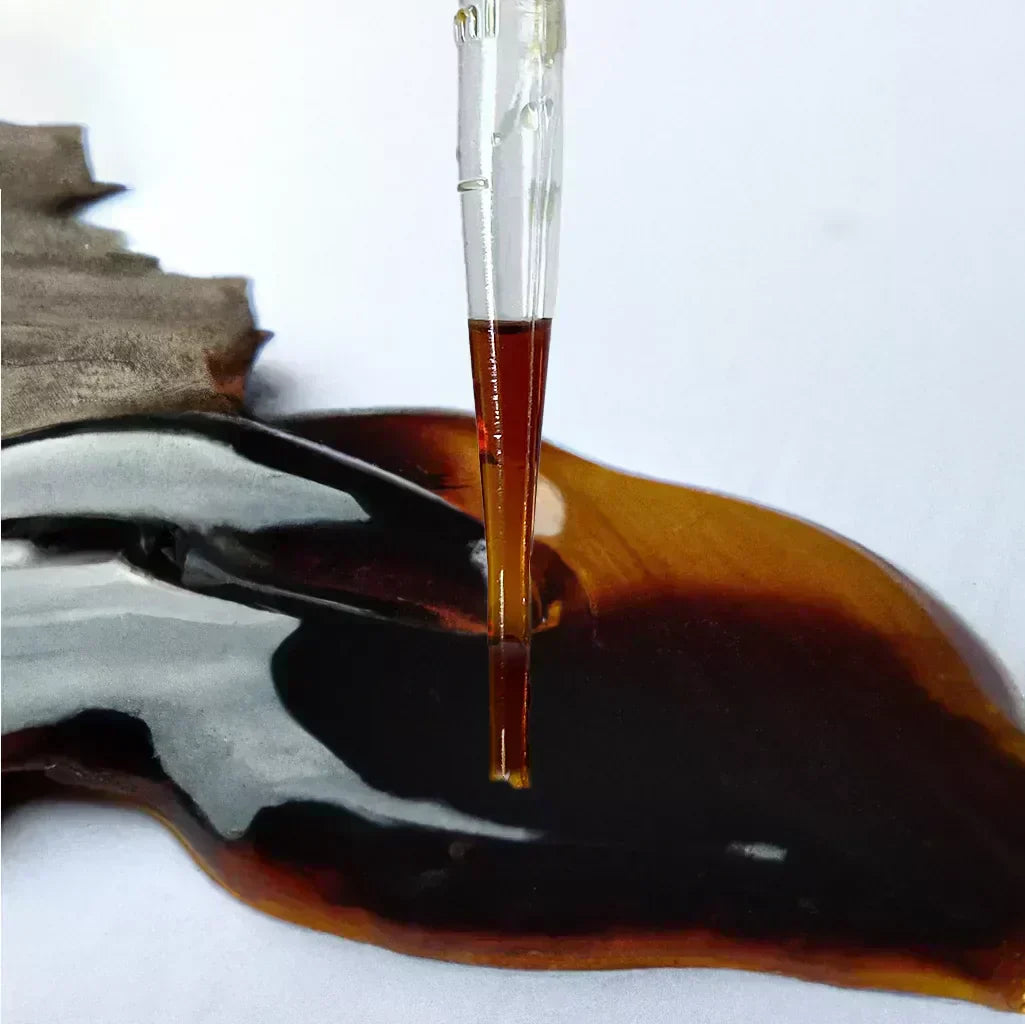
Oud and Oud notes
Share
Oud and oud notes in perfumery
You've probably already come across "oud perfumes" and wondered if they contained "real" oud...🤔
If you've ever had the chance to smell "pure" oud oil, do you know what kind it was?
Do you know the different materials used to recreate the unique scents of oud?
The sweet names of Oud
Agarwood, Aloe wood, Calambac, agar wood, eagle wood, Oud or Oudh (عود in Arabic), Gaharu candan (अगरवुड in Malaysia), Agaru (ཨ་ག་རུ་), Jinko or jin-koh (沈香 in Japan), Cham Heong* or Chénxiāng » (沉香 in China), Trầm hương or tram Huong (Vietnam), Mai Ketsana or Mai Kritsana (ໄມ້ ເກດ ສະ ໜາ in Thailand)…
All names for the dark, incredibly fragrant, and now well-known resin that Aquilaria trees produce to defend themselves after years of injury and fungal infection by species of fungi belonging to the genera Aspergillus and Penicillium.
We will note the beautiful homage of the Chinese language in the name of the island of Hong Kong which means the " fragrant port » in reference to Aquilaria.
The olfactory profile of oud is particularly intense and rich and is at once woody, animal, green, smoky, leathery, spicy, fruity, honeyed or even floral.
The following facets are generally found in descriptions of the oud:
▸ animal-phenolic, musky or barn/farm 🐴
▸ leather, smoke, tobacco or incense 💨
▸ resinous, warm, balsamic, amber or honeyed 🍯
▸ green, moist, earthy, bitter, ripe fruit or dried fruit 🌴
In the 2000s, the oud trend in niche perfumery first gained popularity in the Middle East, where it is known and traditionally used as incense (bakhour). The use of this particularly expensive and powerfully scented oil on important occasions or ceremonies is rooted in Indian and Middle Eastern cultures.
Applied pure or mixed in an alcohol-free perfumed composition (attar) with other natural essences such as rose, oud seems to allow one to stand out and symbolize a social status which confers a form of prestige.
Flirting with musky and amber scents, its unique and complex woody olfactory profile attracted the attention of Western perfumers, leading to its gradual incorporation into niche and then mainstream perfumes during the 2010s. In an almost sanitized market where clean notes (so-called "white" musks) dominate, perfumes claiming the presence of oud with its leathery and animal facets are almost a way of asserting oneself and getting olfactory naughty. The fashion effect works wonderfully and releases follow one another wildly.
Beyond the announced and often controversial presence of "real oud" in niche or so-called "mainstream" perfumes, a quick search on parfumo.com reveals more than 8,000 fragrances that include the note "oud" in their composition. The result of a simple query on ChatGPT announces that more than 1,000 fragrances including the word "Oud" have been launched over the last 10 years in the market, which has approximately 2,000 perfume launches per year.
Oud's exotic yet luxurious appeal, its almost mystical spiritual aura, and the animal charm of its powerful notes make it a sought-after ingredient at the crossroads of Eastern and Western olfactory cultures.
Species, their origins and their olfactory profiles
There are about 20 species of Aquilaria, each with slightly different characteristics in terms of flavor profile.
These different olfactory profiles can of course vary depending on the origin, the growth environment and the age of the infected trees.
Aquilaria allagocha : deep, woody and slightly animal notes, sometimes with smoky and spicy facets.
India 🇮🇳, Bangladesh 🇧🇩, Iran 🇮🇷, Nepal 🇳🇵, Vietnam 🇻🇳
Aquilaria mallaccensis : woody, warm and resinous nuances, sometimes with notes of dried fruits.
Indonesia 🇮🇩, Malaysia 🇲🇾, Singapore 🇸🇬, Thailand 🇹🇭, Laos 🇱🇦, Vietnam 🇻🇳, Philippines 🇵🇭
Aquilaria crassna : subtle and sweet woody notes accompanied by slightly green and spicy touches.
Cambodia 🇰🇭 , Laos 🇱🇦, Thailand 🇹🇭, Vietnam 🇻🇳
Aquilaria beccariana : woody notes with green and fresh nuances
Indonesia 🇮🇩 / Malaysia 🇲🇾: islands of Sumatra and Borneo
Aquilaria microcarpa : more earthy and herbaceous woody notes
Indonesia 🇮🇩 , Malaysia 🇲🇾
Aquilaria hirta : softer and less intense woody notes, with sometimes floral or fruity facets.
Malaysia 🇲🇾
Aquilaria parfivolia : woody notes, but with a certain lightness and perhaps fresher or camphor accents.
Thailand 🇹🇭, Indonesia 🇮🇩
Only Aquilaria mallaccensis is classified as an "endangered species" by the IUCN, largely due to overexploitation for its precious wood. This species is listed in the CITES protection program, while other species remain threatened after years of overexploitation, deforestation, and poaching.

The artisanal production of Oud
Traditional oud production is a skilled craft that combines tradition, know-how, and science. Infection of Aquilaria trees can be natural or carefully induced by growers with specific fungi. To defend itself against this infection or injury, whether natural (animals, bad weather) or artificial, the tree produces resin with antifungal and antibacterial properties as a defensive reaction to prevent the infection from spreading to the plant tissue. Thus, the oud (resin) seeps into the wood around the damaged area, forming a single substance, which explains the name "oud wood" or "agarwood."
This process requires patience, as it often takes years for the resin to fully develop. The artisanal approach respects the tree's natural growth and guarantees the highest quality oud, with each batch having a unique fragrance profile based on the tree's age, soil, and climatic conditions.
The infected wood is then harvested by removing the parts of the tree where the resin has accumulated. Oud wood is often cut into small pieces and sometimes ground to facilitate the extraction of the resin or the production of essential oil by steam distillation.
While the IFRA Code of Practice recommends a maximum dosage of 40%, the cost factor naturally comes into play in the quantity of pure oud present in a composition. Depending on its origin, quality and purity, age, market fluctuations, and quantities purchased, the price of agarwood can vary between €50 and €300 per gram, or even more for exceptional qualities or specific provenances.
Like fine wines, very mature "Kinam" or "Kynam" is considered one of the most precious and rare forms of oud, highly valued for its unique olfactory qualities and rarity. This grade of agarwood is often described as having woody, spicy notes, with an almost honeyed or vanilla-like sweetness, and a complexity rarely found in other types of oud. The rare old Aquilaria trees that produce it are found in Vietnam and China, among others.
Beyond its olfactory properties and its preciousness, the beauty and poetry symbolized by this defense mechanism of the Aquilaria tree, transforming an aggression into a precious odorous substance, undoubtedly contributes to the attraction and covetousness that oud arouses throughout the world.

Alternatives to natural Oud in perfumery
The rarity and price of this precious essence naturally invites the perfume industry and perfumers to reconstruct and interpret its complex profile by relying on a combination of particularly complementary natural and synthetic materials.
▸ Natural materials for an oud accord:
Woody notes and earthy : cypriol (nagarmotha), Atlas cedarwood, sandalwood, vetiver, patchouli,
Notes of resins and incense : olibanum, myrrh, benzoin, Peruvian balsam
Amber, leathery and smoky notes: labdanum, castoreum, civet, rectified birch tar…
Spicy notes : cinnamon, cloves, saffron
▸ Synthetic materials for an oud chord:
Woody, amber and musky notes : Norlimbanol®, Kephalis®, Iso E Super®, Ambroxan®, Ambermax®, Amber Xtreme™, Cashmeran®, musk ketone, ambrettolide and various musks…
Spicy notes : cinnamic alcohol, cinnamaldehyde, eugenol, safranal, safralein
Leathery, animal and smoky notes : Castoreum (repro), Civette (repro), Guaiacol, various phenols and cresols…
🧪 Have you also smelled the different synthetic versions reproducing agarwood?
Here are some basic suggestions such as different interpretations of the oud and its multiple facets (non-exhaustive list):
▸ On the Givaudan side:
Black Agar Givco® combines notes of amber, frankincense and balsamic notes, evocative of the smoke of wood burned in bakhour (incense).
▸ On the Firmenich side:
Oud Synthetic 10760 E® initially called Oud (Aloeswood) Blend (F) , recalls the natural essence with both vetiver and balsamic facets.
Oud Samrat® contains approximately 1% of OUD ASSAFI™, a natural extract from a variety called Aquilaria Malaccensis, registered by Firmenich at CITES for use in perfumery in 2018. It develops woody, amber, spicy, warm and slightly animal notes.
Oud Maleki® contains approximately 0.5% OUD ASSAFI™. It develops woody, powerful and animal notes.
Oud Firbest® also contains compounds of natural origin, develops woody, deep, balsamic, animal nuances
▸ From International Flavors & Fragrances (IFF):
Oud Oliffac® develops sweet notes of tobacco and dried fruits with animal, leather, smoky and mossy facets.
Perfumers rely on these compositions, considered "reconstitutions" or "reconstructions," that enrich the palette of scent creators. These materials allow them to simulate the complexity of oud notes while allowing creativity to express itself, with a "moderate" cost constraint compared to the price of natural oud. In modern perfumery, this constraint remains a major consideration when formulating a perfume. Indeed, the general public is not always well aware of this parameter in the olfactory equation, probably because it is rarely highlighted by brands, or evoked in a way inversely proportional to the romantic and fiery storytelling that oud inspires.

Oud in Superfumista perfumes
Do we use real oud in our bespoke fragrances and those in our collection?
In fact, we use oud essential oil in small quantities in our creations 😅 such as that from Thailand (Oud Siam) and Cambodia.
Depending on each perfumer's projects, their tastes and the materials selected around agarwood, we can seek to realistically reinforce certain facets of oud essential oils. The choice of natural and synthetic materials as explained in detail here is carried out according to the olfactory profile of the desired oud which can be the star at the center of the perfume or play a more secondary role in the composition.
Some tailor-made projects are also an opportunity for perfumers to work on a unique "oud" note with more or less abstraction, like a non-figurative painting which draws inspiration from the beauty of nature's treasures to translate it with sensitivity and creativity, and for the more daring, to transcend it in an olfactory work.
Oud in our perfumes:
Oud Galant is an 18% concentrated eau de parfum. This creation contains 1% Oud Siam essential oil.
See the details of the notes




